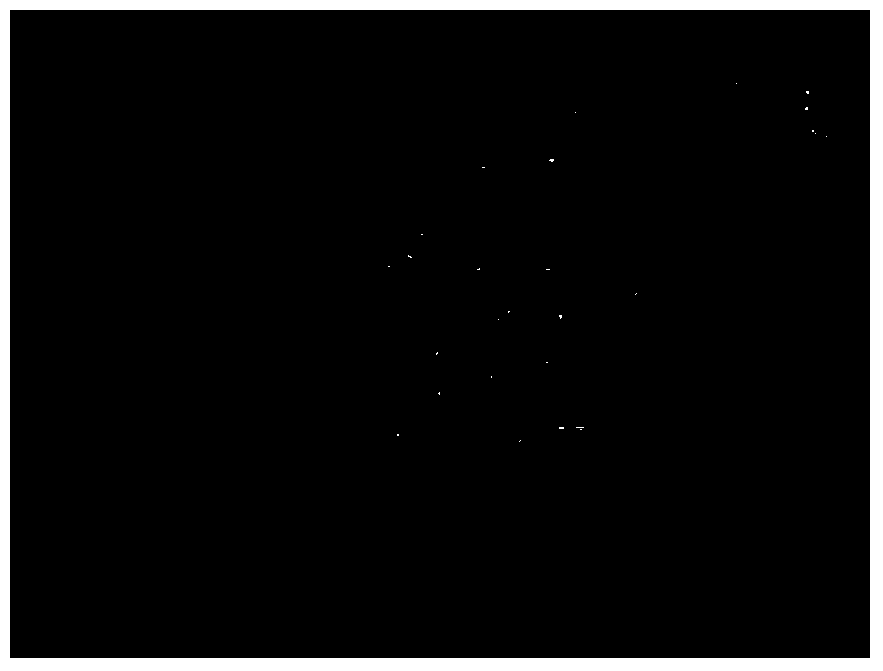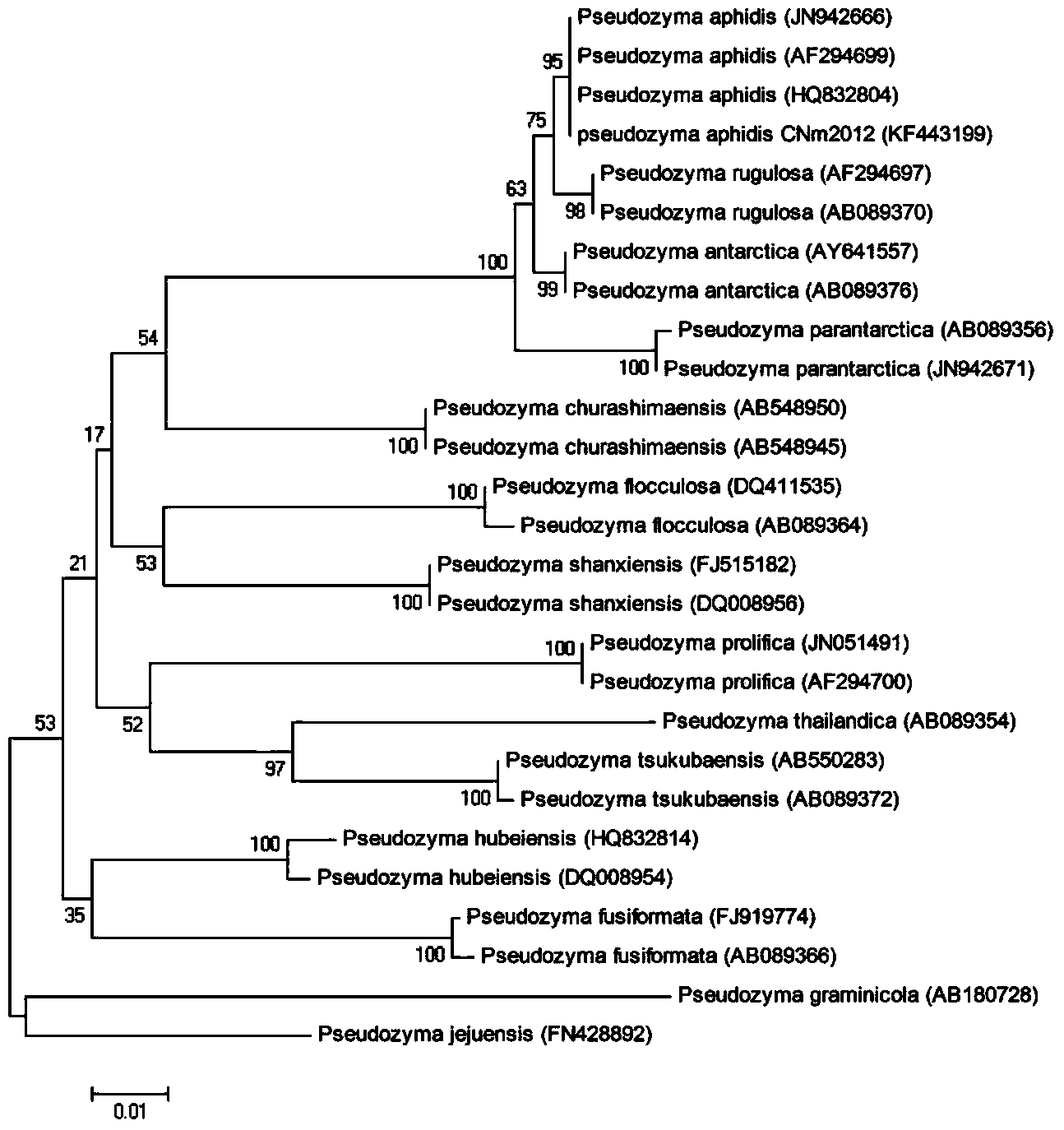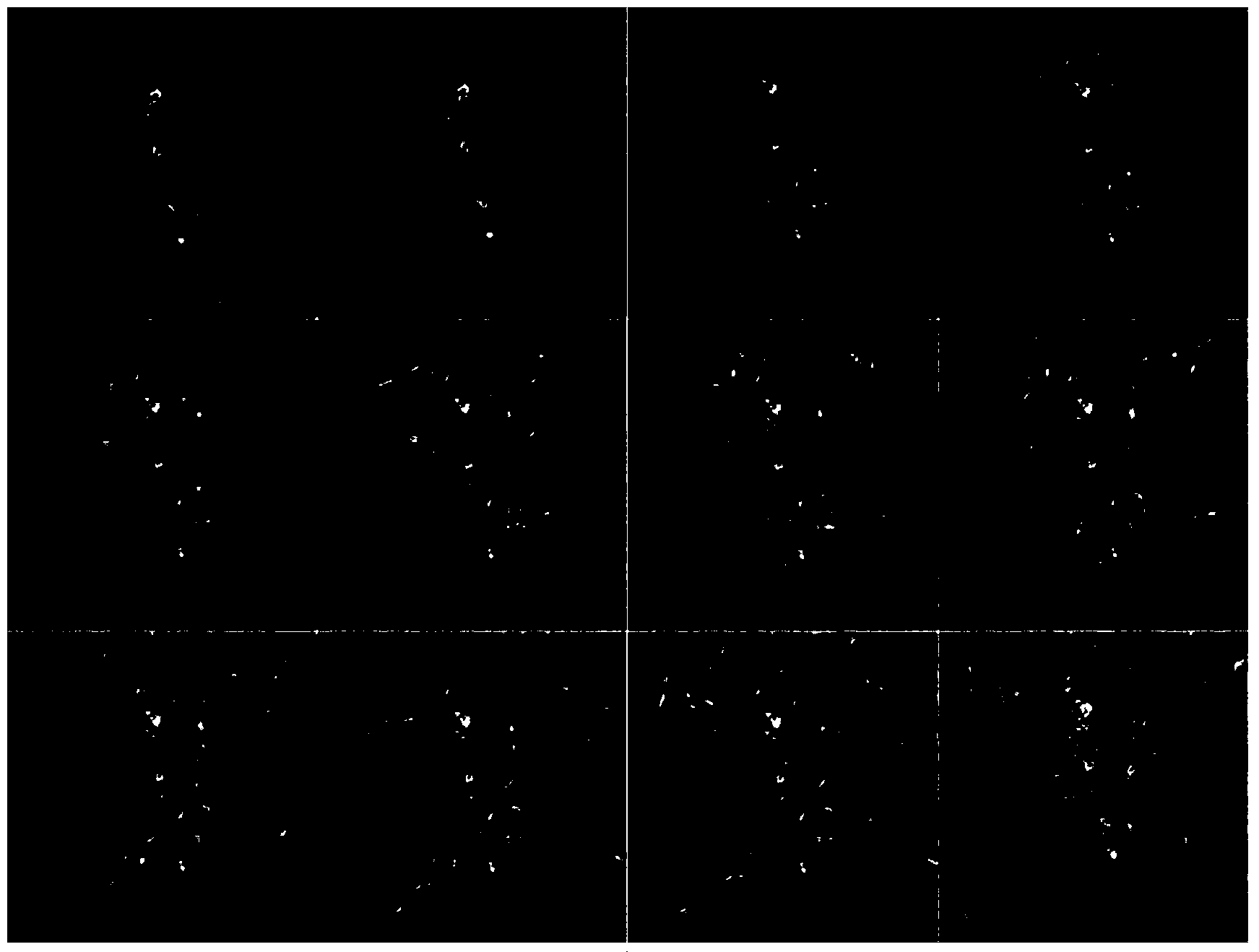Fungus capable of capturing conidium of mulberry powdery mildew
A technology of conidia and mulberry powder, applied in the direction of fungi, microorganism-based methods, chemicals for biological control, etc., to achieve the effects of easy preparation and production of bacterial agents, reduced production, and rapid growth
- Summary
- Abstract
- Description
- Claims
- Application Information
AI Technical Summary
Problems solved by technology
Method used
Image
Examples
Embodiment 1
[0020] Example 1 pseudozyma aphidis Isolation and identification of CNm2012
[0021] 1. Isolation and purification of strains
[0022] (1) Separation. Medium: 200g potato, 20g glucose, 18g agar, 3g penicillin and streptomycin, 1L single distilled water. In the process of observing the germination of powdery mildew conidia, the strains found to have a predatory effect on it were spread on the medium and cultured at a constant temperature of 28°C.
[0023] (2) Purification. Sabouraud medium: glucose 40g, yeast extract 10g, peptone 10g, agar powder 36g, single distilled water 1000ml, pH 6.5-7.5. The culture was picked and streaked on the culture medium to inoculate the strain, and cultured at a constant temperature of 28°C.
[0024] (3) Conservation of species. Potato medium: 200g potato, 20g glucose, 18g agar, 1L single distilled water. The purified strains were kept on the slant of this medium.
[0025] 2. Morphological and molecular biological characteristics of th...
Embodiment 2
[0040] Example 2 strain pseudozyma aphidis Microscopic observation of the predation effect of CNm2012 on conidia of Powdery mildew Morus alba
[0041] Weigh 100g of potatoes, 10g of glucose, 9g of agar, 500ml of single distilled water, pH 6.5-7.5, put the prepared medium into a pressure cooker and sterilize at 120°C for 30 minutes. Strain CNm2012 was activated on the PDA plate. Then use the 500ml Erlenmeyer flask to ferment the bacterial strain. The used medium for fermentation is Sabouraud's medium, and its formula is: glucose 4g, yeast extract 1g, peptone 1g, single distilled water 100ml, PH6.5-7.5. The fermentation conditions are: temperature 20-30°C, 180r / min, fermentation for 4 days. The fermented bacterial liquid was centrifuged at 1000 rpm for 5 minutes to remove the supernatant, and then washed three times with sterile water by resuspending, centrifuging, and discarding the liquid. The thalli obtained in the above steps were mixed with powdery mildew conidia, re...
Embodiment 3
[0043] Example 3 Nutritional based on Powdery mildew pseudozyma aphidis Growth curve determination of CNm2012 strain
[0044] The CNm2012 bacterial strain is mixed with different concentrations of powdery mildew conidia respectively into a 100ml suspension, and the suspension contains a concentration of 10 5 cfu / ml of the CNm2012 strain, the concentrations were 6×10 2 cfu / ml, 6×10 3 cfu / ml, 6×10 4 cfu / ml of powdery mildew conidia. The mixture was cultured in a shaker at 28°C and 180r / min, and samples were taken every 12 hours to check its OD600 absorbance (each group used the conidia suspension of powdery mildew of Morus alba at its respective concentration as a blank control). Test Setup 10 5 The aqueous solution of CNm2012 at the concentration of cfu / ml was used as negative control. The results showed that the absorbance value of the CNm2012 strain increased with the increase of the conidia concentration of Powdery mildew (Table 1), indicating that pseudozym...
PUM
 Login to View More
Login to View More Abstract
Description
Claims
Application Information
 Login to View More
Login to View More - R&D
- Intellectual Property
- Life Sciences
- Materials
- Tech Scout
- Unparalleled Data Quality
- Higher Quality Content
- 60% Fewer Hallucinations
Browse by: Latest US Patents, China's latest patents, Technical Efficacy Thesaurus, Application Domain, Technology Topic, Popular Technical Reports.
© 2025 PatSnap. All rights reserved.Legal|Privacy policy|Modern Slavery Act Transparency Statement|Sitemap|About US| Contact US: help@patsnap.com



